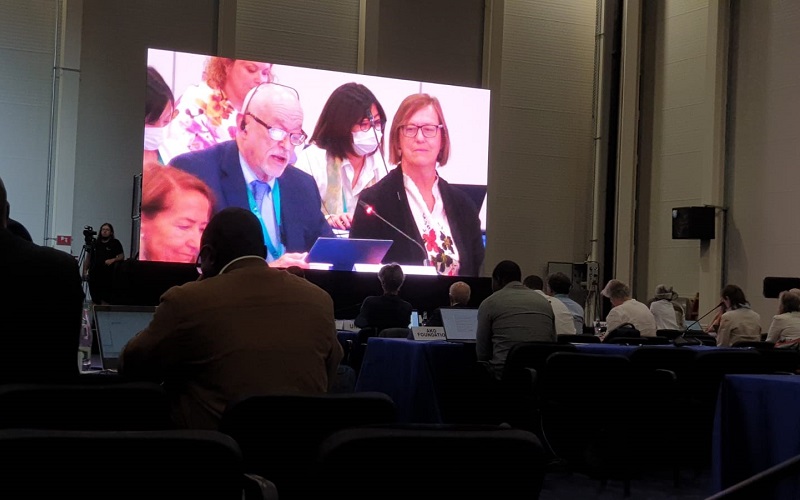
WFPHA Position at the 4th Meeting of the Intersessional Process for Considering SAICM and the Sound Management of Chemicals and Waste Beyond 2020
News
Sep 28, 2022
Chemicals have been made and used throughout history. The industrial revolution drove an explosion in volumes produced. In the aftermath of World War II, chemical companies sought to maintain relevance and market share by reconfiguring wartime production to underpin a peacetime economy. This spurred a wealth of products for mass consumption of metals and plastics to varnishes and pesticides, while marketing campaigns secured their new consumer durables at the center of modern life.
The global chemical industry now contributes an estimated $5.7 trillion USD, or 7% of the world’s Gross Domestic Product (GDP), and supports 120 million jobs worldwide. Global chemicals sales are projected to double by 2030.
Today, chemicals are ubiquitous, in virtually all manufacturing processes, from textiles to automobiles and electronics. Despite delivering significant benefits in living standards, which are most apparent in industrialized societies, they also bring enormous costs. Chemical heavy production processes consume high levels of energy and increasingly scarce water resources, with adverse impacts on human health and the environment.
Chemicals and their wastes are now detectable in all ecosystems; nowhere on the planet is now free of chemical waste. Whereas the true health burden arising from exposures to chemicals is unknown, largely due to inadequate data collection, estimates suggest 16% of all deaths globally are attributable to pollution, which also accounted for economic losses totaling US$ 4∙6 trillion (6∙2% of global economic output) in 2015. Furthermore, 92% of pollution-related deaths, and the greatest burden of pollution’s economic losses, occur in low- and middle-income countries. Only 47% of countries have a poison center, with particular gaps in the African and Eastern Mediterranean regions and in the small island states in the Western Pacific region. Specialized poison centers provide expert advice and assist with the prevention, diagnosis, and management of poisonings.
Initially unregulated, chemical regulation emerged in the 1990s to face an enormous backlog in assessing their safety. The 1998 Rotterdam Convention sought to protect human health and the environment from potential harm from hazardous chemicals through shared responsibility and cooperative efforts among Parties and facilitating information exchange. The Organisation for Economic Co-operation and Development (OECD) commenced a coordinated effort to screen chemicals marketed in Europe and found that 71% of the sampled high-priority chemicals did not meet the minimum data requirements for health hazard screening set by the OECD chemicals program.
Existing multilateral environment agreements, such as the Basel, Rotterdam, Stockholm, or Minamata Conventions, only covered a fraction of the chemicals universe; for that reason, officials and experts continued to seek a vehicle for effective joint action on the many chemicals that existing multilateral environment agreements did not address.
First proposed by the United Nations Environment Programme’s (UNEP) in the mid-1990s, the World Summit on Sustainable Development (WSSD) in 2002 called for the creation of a Strategic Approach to International Chemicals Management (SAICM). Formally established in 2006, SAICM is a voluntary, multi-stakeholder, multi-sectoral policy framework to promote chemical safety around the world, to pursue the goal that, by the year 2020, chemicals would be used and produced in ways that minimize significant adverse effects on human health and the environment.
It became apparent to SAICM’s governing body, the International Conference on Chemicals Management (ICCM), in 2015 that SAICM would not fulfill its ambitious mandate of achieving the sound management of chemicals and waste by 2020. The intersessional process (IP) was established to construct a successor instrument that would fulfill the mission. The IP seeks to prepare recommendations on the future of SAICM and the sound management of chemicals and waste beyond 2020. During the years, a series of IP meetings were held in different places around the world. The fourth session of the Intersessional Process for Considering the SAICM and the Sound Management of Chemicals and Waste Beyond 2020 (IP4) was held from August 29 to September 2, 2022, in Bucharest, Romania.
Represented by Dr Peter Orris, Co-Chair of the WFPHA Environmental Health Working Group, WFPHA attended IP4.
IP4 was expected to develop recommendations to be considered at the Fifth ICCM (ICCM5) to be held in Bonn, Germany, on September 25 to 29, 2023. IP4 succeeded in developing a “zero draft” document that covers the vision, scope, principles, strategic objectives, targets, institutional arrangements, implementing measures, financial considerations, and procedures for designating “issues of concern” for special attention and concerted action. Delegates welcomed this “Co-Chairs’ Single Consolidated Text” in plenary on the final evening as a significant achievement. Delegates also agreed to suspend IP4 and reconvene in early 2023.
In the closing session, Dr Peter Orris spoke to express our commitment of continued participation in this process and our concern about the lack of centrality to the human health impacts of chemicals. “We pledge our continued involvement in this process and urge the movement of human health to the center of the emphasis in thought and speech. This is necessary, not purely as it is the center of most of our concerns, due to the burden of disease that unsafe practices have on the peoples of the world, but also as an absolute necessity to make this often-invisible burden, visible, to all humans, requiring effective remedial action. We have seen what such a knowledge has done to mobilize countries and populations to combat climate change, and more recently the COVID-19 pandemic. We must mobilize such a force for safe sustainable chemicals. This will require preventive human health evaluation of all chemicals brought into use for products or industrial processes.”
